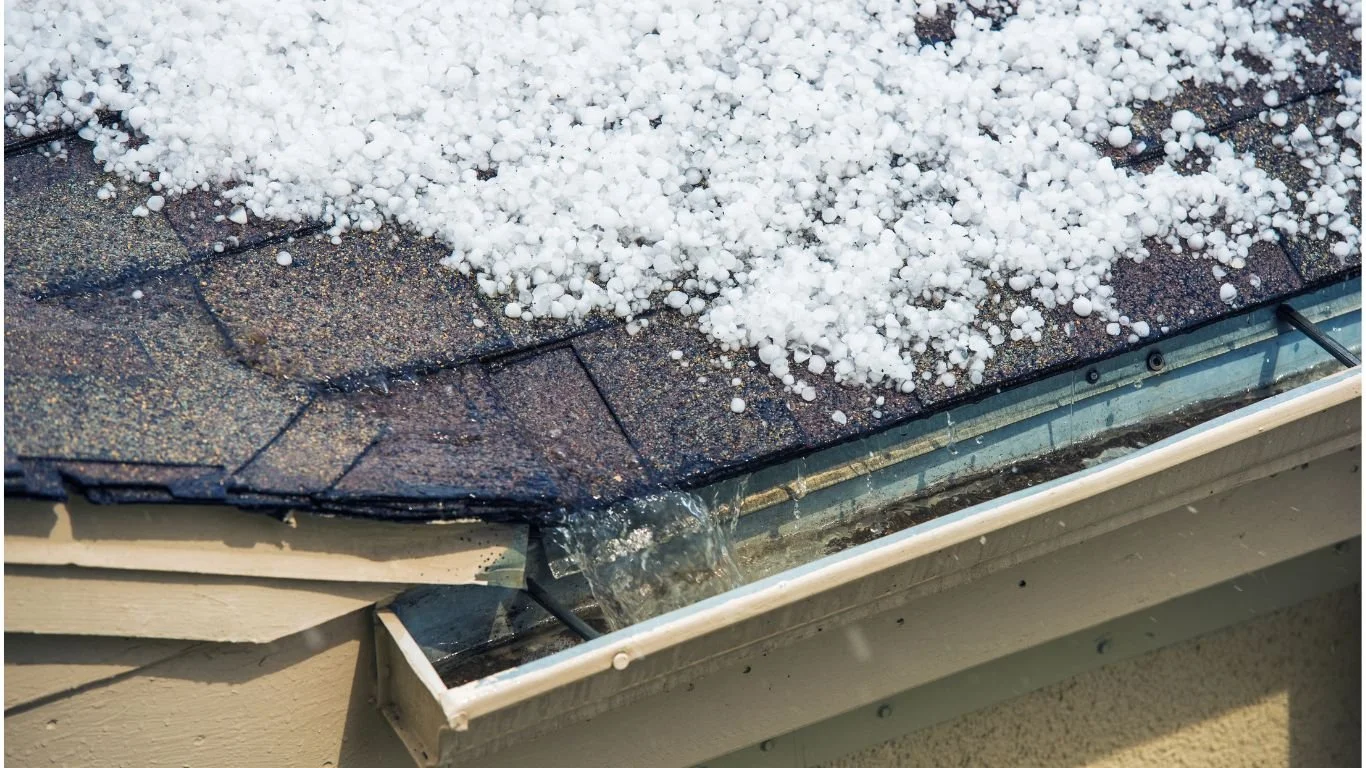What To Do If Your Roof Is Leaking In Winter?
Winter brings a sense of beauty with its glistening snow and crisp air, but it can also pose challenges to the very structure that shields us from the elements – our roofs. One common and concerning issue during this season is your roof leaking. In this blog, we'll explore the causes of winter roof leaks and provide practical steps on what to do if you find yourself facing this chilly predicament.
Understanding the Causes of Winter Roof Leaks:
Before looking into solutions, let's look at the mystery of why roofs tend to spring leaks during the winter months. Several factors contribute to this issue, and understanding them is the first step in addressing the problem effectively.
Ice Dams:
One of the primary culprits behind winter roof leaks is the notorious ice dam. These formations occur when snow on the roof melts and then refreezes at the roof's edges. The ice buildup prevents proper drainage, causing water to seep into your home. Identifying and addressing ice dams promptly is crucial in preventing further damage.
Condensation:
Winter brings a big contrast between the cold outdoors and the warm interiors of our homes. This temperature difference can lead to condensation on the underside of the roof. Over time, this moisture buildup can result in leaks. Proper insulation and ventilation are key to reducing condensation-related leaks.
Flashing Issues:
The flashing around chimneys, vents, and skylights is another potential weak point. Harsh winter weather, with its freeze-thaw cycles, can cause flashing to deteriorate or become loose allowing water infiltration. Regular inspections can help catch and address flashing issues before they escalate.
Roof Material Wear and Tear:
As roofs age, the materials may deteriorate, leading to vulnerabilities. Winter conditions, such as heavy snow and freezing temperatures, can make existing wear and tear worse, making your roof more susceptible to leaks.
Signs Your Roof Is Leaking:
Before exploring solutions, it's crucial to recognize the signs of a leaking roof. These indicators can help you take prompt action and minimize potential damage. Look out for:
- Water stains on ceilings or walls
- Dripping water or puddles in your attic
- Sagging or bowing ceiling
- Mold or mildew growth
- Unpleasant odors, indicative of water-soaked materials
What To Do If Your Roof Is Leaking in Winter:
Now that you've identified a roof leak, it's time to take action. Here's a step-by-step guide on what to do if you find yourself facing this winter woe:
Contain the Damage:
Place buckets or containers under the leaks to catch dripping water. This helps prevent further damage to your floors, furniture, or belongings. If the leak is severe, consider creating a small hole in the ceiling to allow water to drain freely.
Clear Snow and Ice:
If ice dams are the culprit, safely remove accumulated snow from your roof using a snow rake or other appropriate tools. Exercise caution to avoid injury, and consider consulting professionals for extensive ice dam removal.
Address Immediate Concerns:
If the leak is related to flashing issues, use a roofing sealant to patch any visible gaps or cracks. This is a temporary fix to minimize immediate water infiltration until more comprehensive repairs can be undertaken.
Inspect Your Attic:
Venture into your attic space to assess the extent of the damage. Look for water-soaked insulation, damaged rafters, or mold growth. Addressing these issues promptly can prevent further deterioration and potential health hazards.
Consult Professionals:
While some immediate actions can be taken, seeking professional help is crucial for a comprehensive solution. When it comes to entrusting your roofing concerns to seasoned professionals, New Look emerges as the perfect solution for any roof leaking issues you might be dealing with.
Long-Term Solutions for Winter Roof Leaks:
Addressing the immediate concerns is crucial, but for a lasting solution, consider the following long-term strategies:
Improve Insulation:
Enhance insulation in your attic to prevent heat from escaping, minimizing the risk of ice dams and condensation. Proper insulation helps maintain a consistent temperature on your roof, reducing the likelihood of winter leaks.
Ensure Proper Ventilation:
Adequate ventilation is key to preventing condensation-related issues. Proper airflow in the attic helps expel excess moisture, keeping the underside of the roof dry.
Regular Roof Inspections:
Schedule regular roof inspections, especially before the winter season. Professionals can identify and address potential issues before they escalate, saving you from costly repairs down the line.
Upgrade Flashing:
If flashing issues are recurrent, consider upgrading to more durable materials or consulting with professionals to ensure proper installation.
Consider Roof Replacement:
If your roof is aging and showing signs of extensive wear, it might be time to consider a roof replacement. Investing in a new roof with modern materials and technologies can provide long-term protection against winter leaks.
Facing a leaking roof in winter can be a scary experience, but with prompt action and strategic solutions, you can minimize damage and protect your home. From addressing immediate concerns to implementing long-term preventive measures, taking a proactive approach is key. If you find yourself dealing with a winter roof leak, remember that timely intervention and the expertise of professionals, like those at New Look, can make a significant difference in preserving the integrity of your home. Stay vigilant, take action, and embrace the warmth and security of a well-maintained roof, even in the coldest of seasons.
New Look Roof specializes in roofing, siding, windows, gutters, and repairs. We serve the greater Louisville area and pride ourselves on being industry-leading in materials, education, training, and craftsmanship. We invite all potential clients to fill out a form online or call us directly at 502.341.4415!



